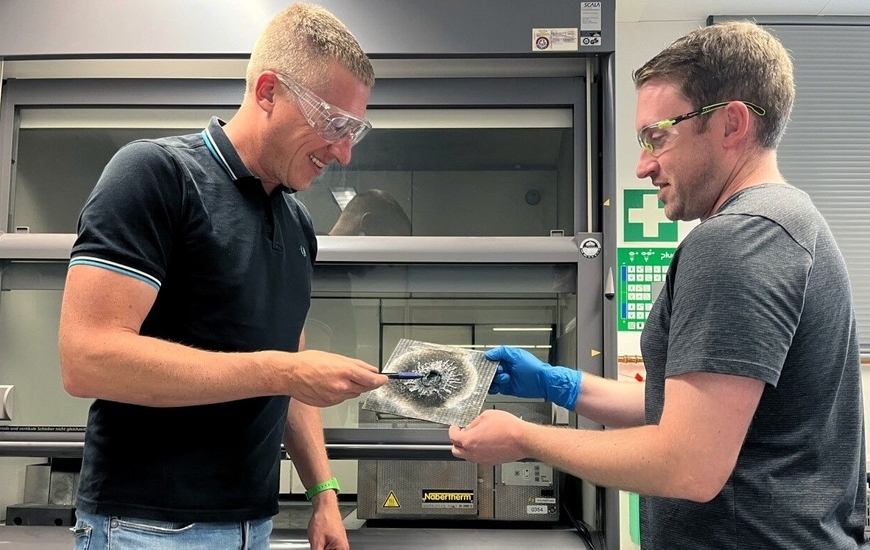Envalior is offering a new composite under the Tepex brand that, even with very low test specimen thicknesses, passes the standard thermal runaway tests for electric vehicle battery housings.
The high resistance of this composite to the extreme conditions of a battery cell fire can be attributed to the non-flammable long and continuous fibers that reinforce the material in a multi-layer structure. “It’s thanks above all to the fibers that our structural material is capable of withstanding the extreme pressures, temperatures well in excess of 1000°C, and bombardment by abrasive hot particles that occur during the thermal runaway of battery cells. This is why it’s also ideal for components inside the battery such as the cell housing, holder and partitions,” says Dr. Dirk Bonefeld, Head of Tepex® Product Management.
Vehicle battery cells are at risk of exothermic chemical reactions leading to fires as a result of factors such as electrical malfunctions, overheating, and mechanical damage. This process is known as “thermal runaway.” If the fire spreads from one cell to the next, this is known as “thermal propagation.” Every effort must be made to ensure that the fire does not spread to the entire vehicle and endanger the occupants. This is why the battery housing plays a key role in containing fires.Thermal runaway tests simulate the extreme stresses to which the battery housing is exposed when a fire breaks out.
"Our new composite can pass the standard tests covering this eventuality – such as the BETR test to UL 2596 – with test specimen thicknesses of just two millimeters or even less,” says Bonefeld. BETR stands for “battery enclosure thermal runaway.” And even with wall thicknesses of just two millimeters, the material easily meets the requirements of the battery stress test involving particle bombardment, as conducted by svt Holding GmbH, a leading company in various areas including industrial fire safety applications. “Even upon exposure to particle bombardment, the Tepex ® test specimen did not undergo burnthrough, neither when the temperature at the end of the test was as high as 1400°C nor for another 20 seconds after – and that’s without any additional protective measures in the material and without supporting metal sheets. So even with low wall thicknesses and, in turn, low weight, a high degree of safety is ensured,” says Bonefeld.
The composite also acts as an effective barrier against external fire sources. In the fire pan test, which is based on UN regulation 180, 6.2.4, and simulates highly realistic battery fire scenarios in accident situations, burning fuel did not create holes in the material, and the fibers did not ignite.
-

-
29 September 2023























